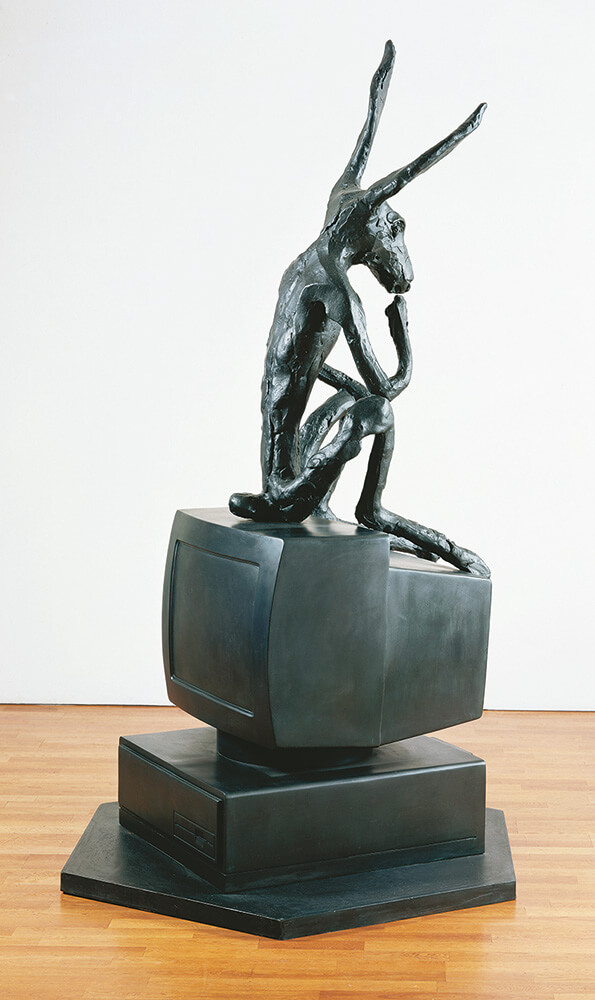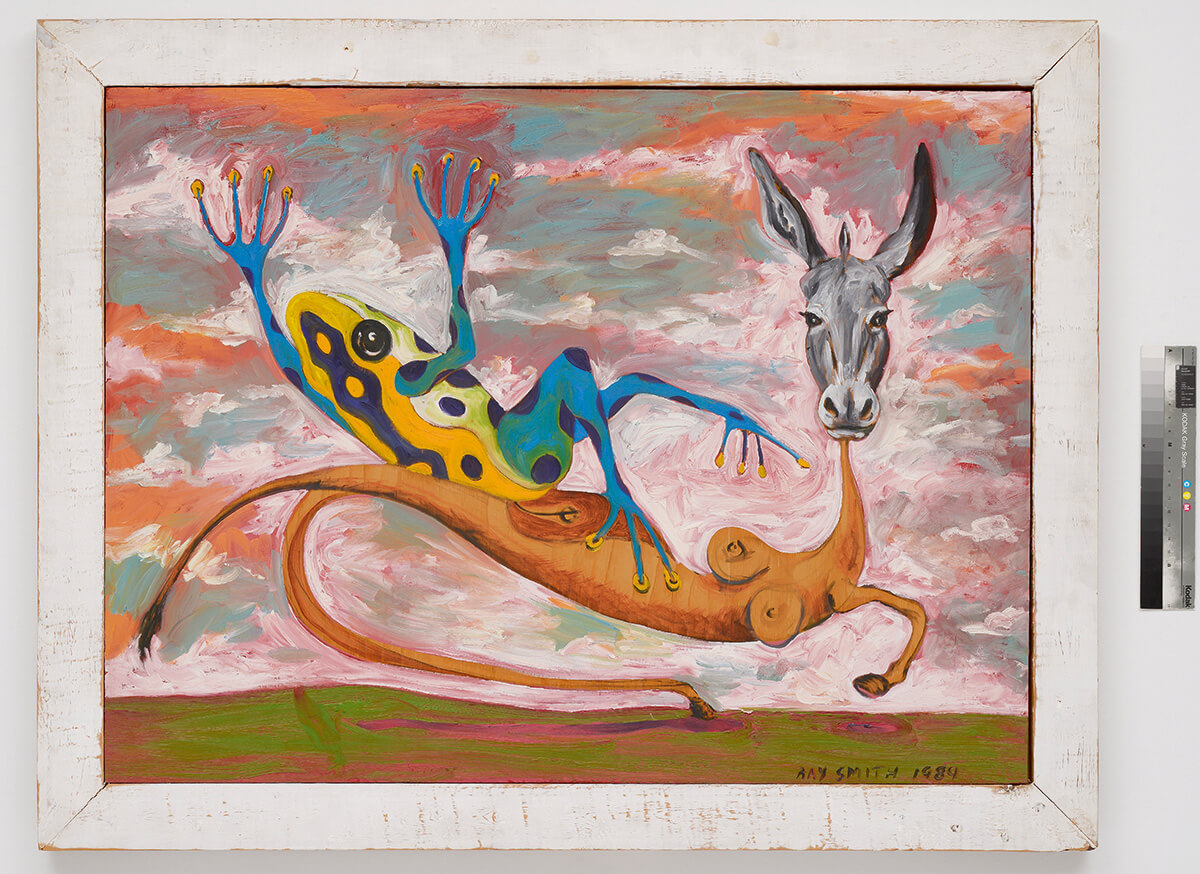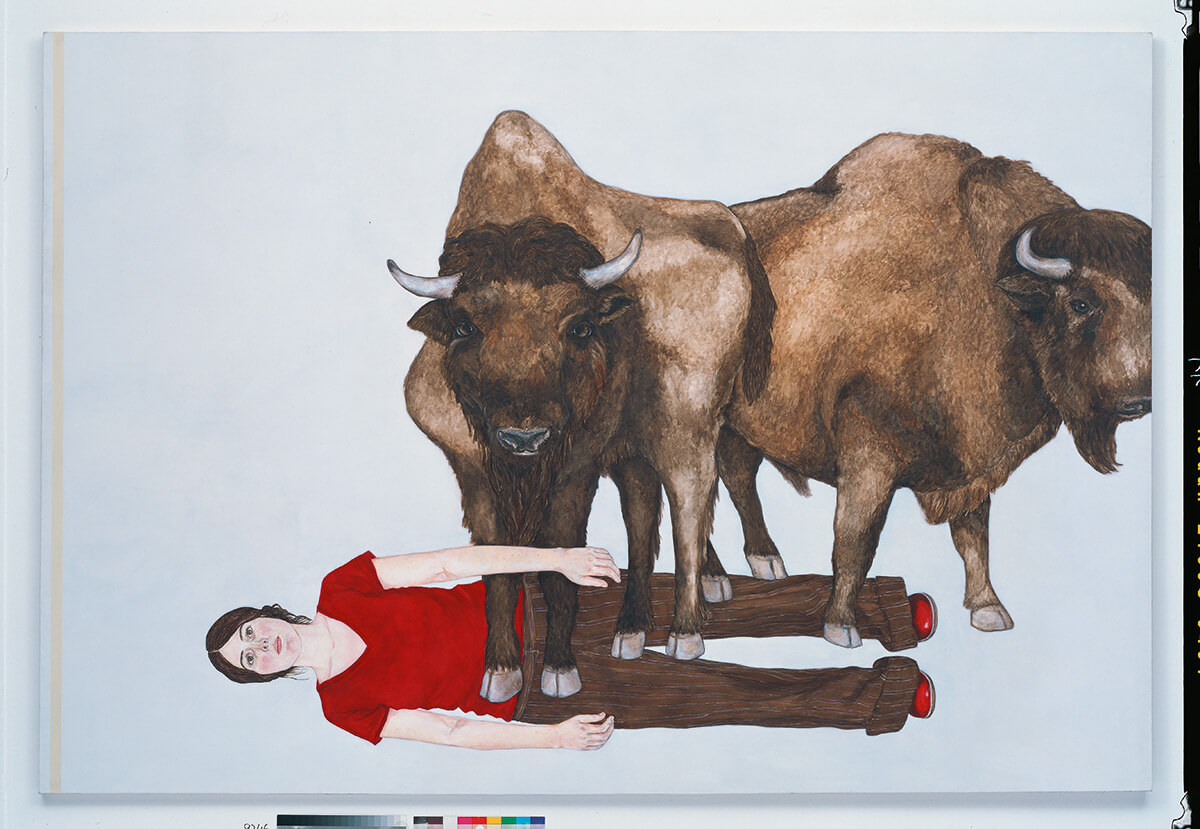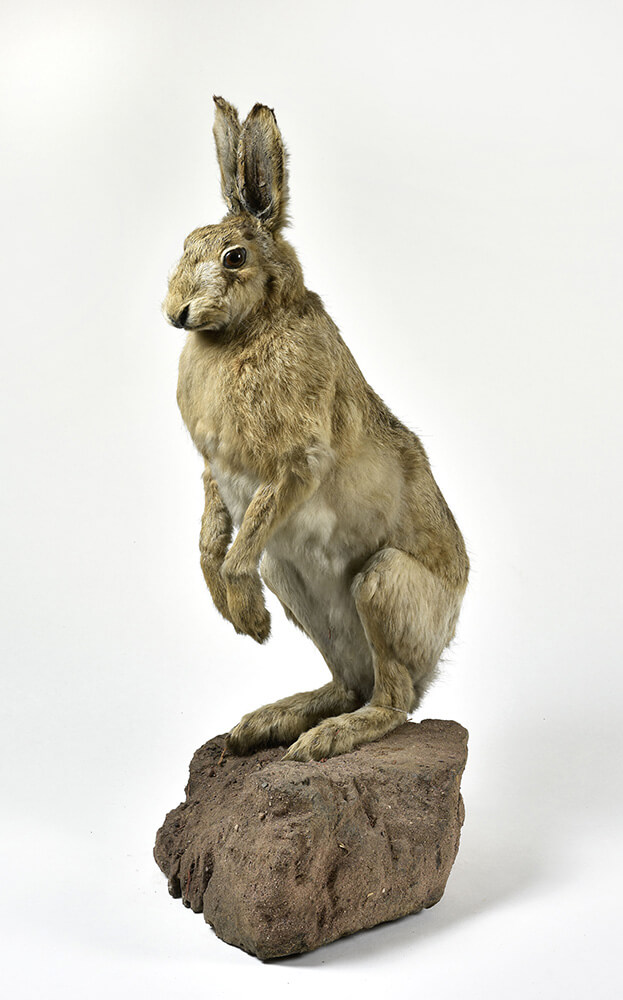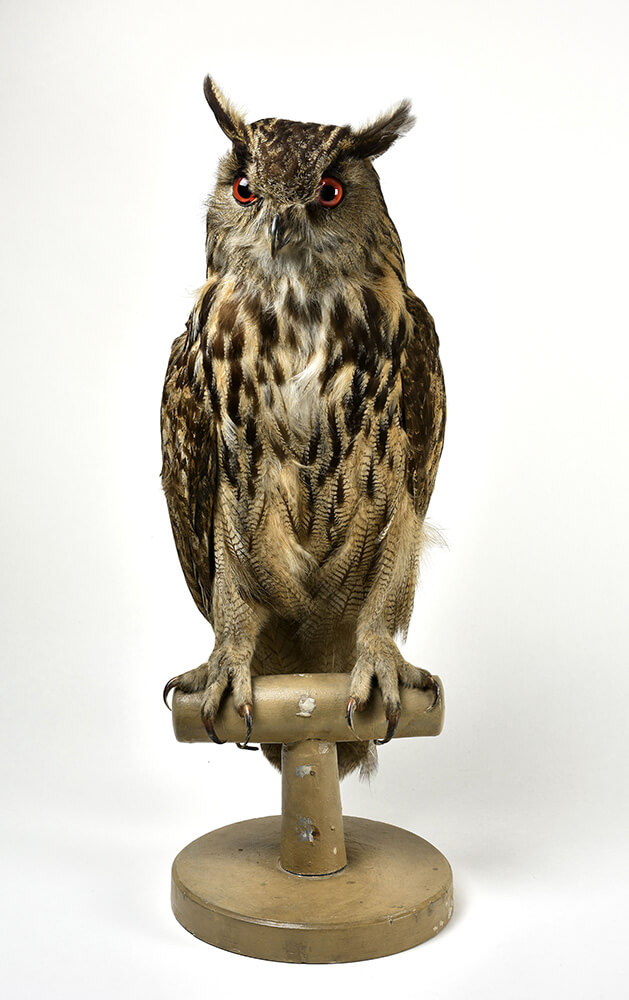Bestia The Würth Collection’s Bestiary
In partnership with the Strasbourg Zoological Museum
7 November 2021 - 7 September 2022
The exhibition, Bestĭa. The Würth Collection’s Bestiary presents an original dialogue between works of art from the Würth Collection and specimens from the Strasbourg Zoological Museum, an encounter between an art collection and a scientific collection, between a private collection and a public institution. Its intention is to celebrate the beauty alongside the strangeness of the animal kingdom by presenting a dialogue between paintings by artists such as Max Ernst, Georg Baselitz, Gerhard Richter or Ray Smith, Barry Flanagan, Marc Quinn, etc., and stuffed animals, in an exhibit that takes as its theme the four elements: earth, air, fire and water.
The exhibit calls on a theory that dates back to ancient Greece, to a concept from the Pre-Socratic world, that, according to the Greek philosophers, Empedocles, Plato and Aristotle, organised and formed the universe at that time. It suggests natural environments that offer a view of the richness of the animal kingdom and the variety of its representation in the contemporary age.
The dialogue between an art collection and a scientific collection can also be seen as a distant echo of what were called “cabinets of curiosities”, which first appeared during the Renaissance. In those old collections, reserved first of all for palaces, but which, over the centuries, would form the core exhibits of many museums, we find a series of incongruous objects that come down to us at once from natural history (naturalia) – precious stones, stuffed animals and herbaria – and works made by man (artificialia) – medals, paintings and archaeological items. Like those cabinets of curiosities, the intention of which was at once to introduce people to the world, to understand it better and, above all, to bear witness to its diversity, Bestĭa presents a bountiful and aesthetic aspect of the animal kingdom. Over and above customary zoological and historical classifications, it urges visitors to adopt a sensitive approach to what we know, imbued with a spirit of curiosity.
Bestĭa. Les animaux dans la collection Würth
Barry Flanagan
Larger Thinker on Computer
2003
coll. Würth Inv. 8613
photo: Archiv Würth
Bestĭa. Les animaux dans la collection Würth
Ray Smith
Sans Titre
1989
coll. Würth Inv. 1917
photo: Volker Naumann
Bestĭa. Les animaux dans la collection Würth
Karl Horst Hödicke
Sheep
1982
coll. Würth Inv. 2868
photo: Philipp Schönborn
Bestĭa. Les animaux dans la collection Würth
Donna Stolz
Interwoven
2003
coll. Würth Inv. 9246
photo: Volker Naumann
Bestĭa. Les animaux dans la collection Würth
Lièvre d’Europe
Lepus (eulagos) europaeus (Pallas, 1778)
Musée Zoologique de Strasbourg
photo : Musées de Strasbourg, M. Bertola
Bestĭa. Les animaux dans la collection Würth
Grand-Duc d’Europe
Bubo bubo (Linnaeus, 1758)
Musée Zoologique de Strasbourg
photo : Musées de Strasbourg, M. Bertola

